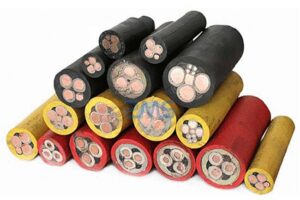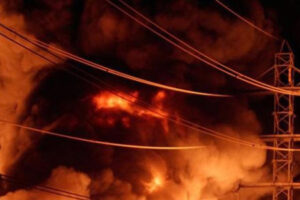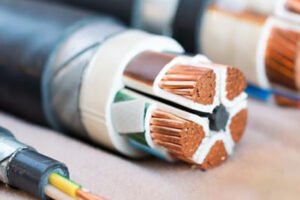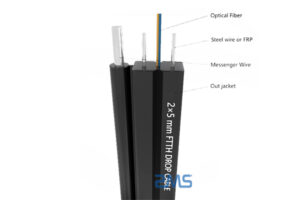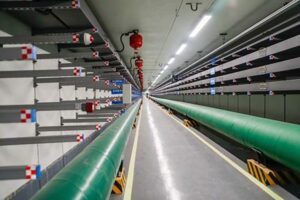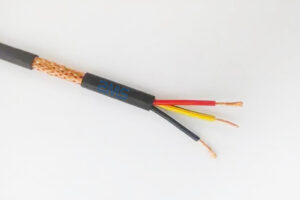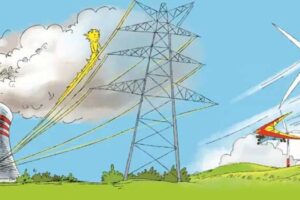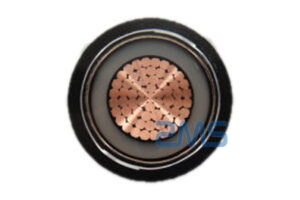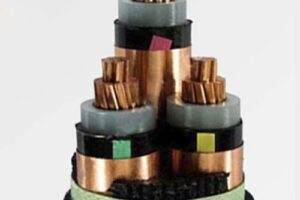The material of the cable also plays a decisive role in the quality of the cable. In the past, plastic cables were used more often, but gradually rubber cables began to replace plastic cables. So is it because rubber cable must be the best. Here let ZMS cable company’s editor explain the difference between rubber and plastic.
Impormasyon
Causes of Cable Fires and How to Deal with Them
According to the railroad station in Nanjing, at 18:20 on August 8, the Nanjing Yangtze River Bridge highway bridge below the attached place cable burst into flames and smoke, the fire department and the railroad units concerned quickly disposed of, affecting some trains late. The cause of the incident is under investigation.
Giunsa ang buhat sa fiber optic cable?
Ang mga optika sa fiber usa sa mga nag-unang mga haligi sa modernong mga komunikasyon. Kini adunay usa ka dako nga kapasidad sa komunikasyon ug distansya sa pag-transmission. Kini usab adunay bentaha nga mahimong labi ka sensitibo ug immune sa electromagnetic nga pagpanghilabot. Busa, Giunsa ang eksakto nga mga optika sa fiber nga naka-transmit sa mga optical signal?
What Is The Specific Classification Standard Of Cable Flame Retardant Grade?
Sa pagkakaron, ang cable industry is accustomed to flame retardant (FireRetardant), LowSmokeHalogenFree (LSOH) or low halogen low smoke (LSF), Sunog sa kalayo (FireResistant), ug uban pa, with certain fire performance of the cable, are collectively referred to as fire-resistant cable.
What is FTTH Fiber Optic Cable? What Kind of Structural Features Does it Have?
Ako. Introduction Of FTTH Networks
With the development of optical communication networks and the deepening of fiber optic access, FTTH network construction is growing exponentially.
Sa pagkakaron, both China Telecom and China Netcom have indicated that they will invest huge amounts of money in the large-scale commercialization of FTTH.
Ngano nga ang mga high-boltahe nga mga kable gilubong sa ilawom sa ilawom sa ilawom sa ilawom?
Unsa ang usa ka high-boltahe cable?
Ang paghatud sa Ultra-High Voltage nagtumong sa paggamit sa 500 KV-1000 KV boltahe nga lebel sa KV aron maipadala ang kuryente.
Kung ang 220 Ang Kv transmission index mao ang 100%, ang paryente nga pagpamuhunan matag kilometros sa pag-transmission sa UHV, Ang paryente nga gasto matag kilowatt-oras nga transmission sa kuryente usa ka gatos nga kilometro ug pagkonsumo sa mga materyales nga metal, ug uban pa, gipahinungdan nga pagkunhod, ug ang linya sa koridor sa koridor nagkaayo nga nag-ayo.
Sa Atong Adlaw-adlaw nga Kinabuhi, Kanunay kita makakita sa overhead Ultra-high Voltage Projection Project, naghunahuna man kita bahin sa pangutana: Ngano nga dili mahimong sama sa lungsod sa ilawom sa yuta, Ang mga linya sa kuryente sa high-boltahe tanan gilubong sa ilawom sa ilawom sa ilawom sa yuta?
Important! What You Need To Know About The Role Of Shielding In Control Cables
Arte shielded control cable is generally used as the connection line of electrical instruments.
It is suitable for the connection line of electrical instruments with an AC-rated voltage of 450/750V and below and the transmission line of the automatic control system.
It has excellent properties such as oil resistance, water resistance, wear resistance, acid and alkali resistance, resistance to various corrosive gases, aging resistance, and non-combustibility.
What Is The Source Of Electricity?
For contemporary people in most parts of the world, electricity is a necessity. It is an essential commodity that contributes to our comfort. Our jobs, gadgets, and most daily activities are directly dependent on our ability to access electricity.
Applications and Prospects of High Voltage DC Transmission Cable
From a worldwide perspective, high-voltage DC transmission cable is applied to the following areas such as long-distance high-capacity overhead transmission, power grid interconnection, and long-distance submarine cable transmission with obvious advantages.
6 Characteristics of Braided Cable
Braided cables are required for stability.
Crossed threads allow the braid to flex and stretch without bending, folding or kinking.
There are excellent electrical conductors braided cables and an electrostatic shield to ensure signal integrity.
Tumbaga, tinned copper, and aluminum are examples of these conductors.

